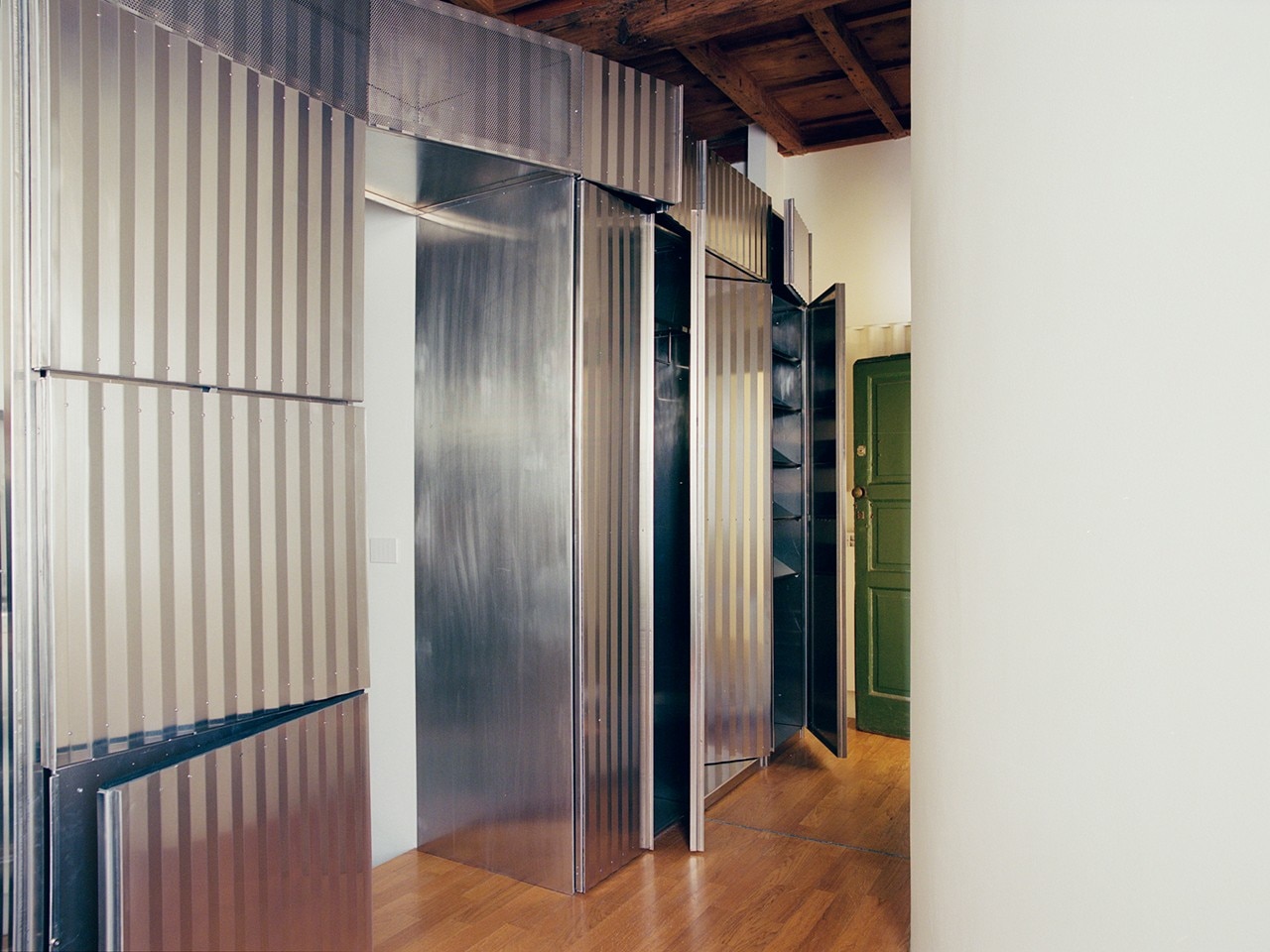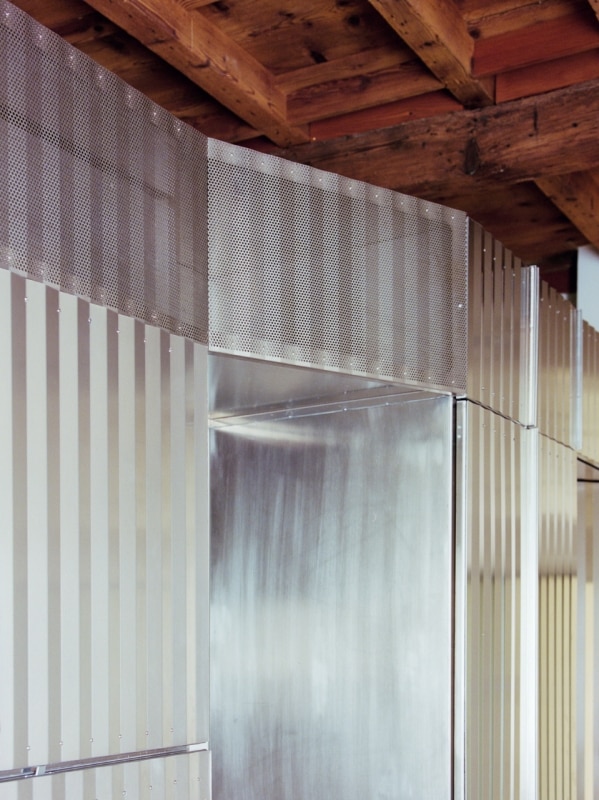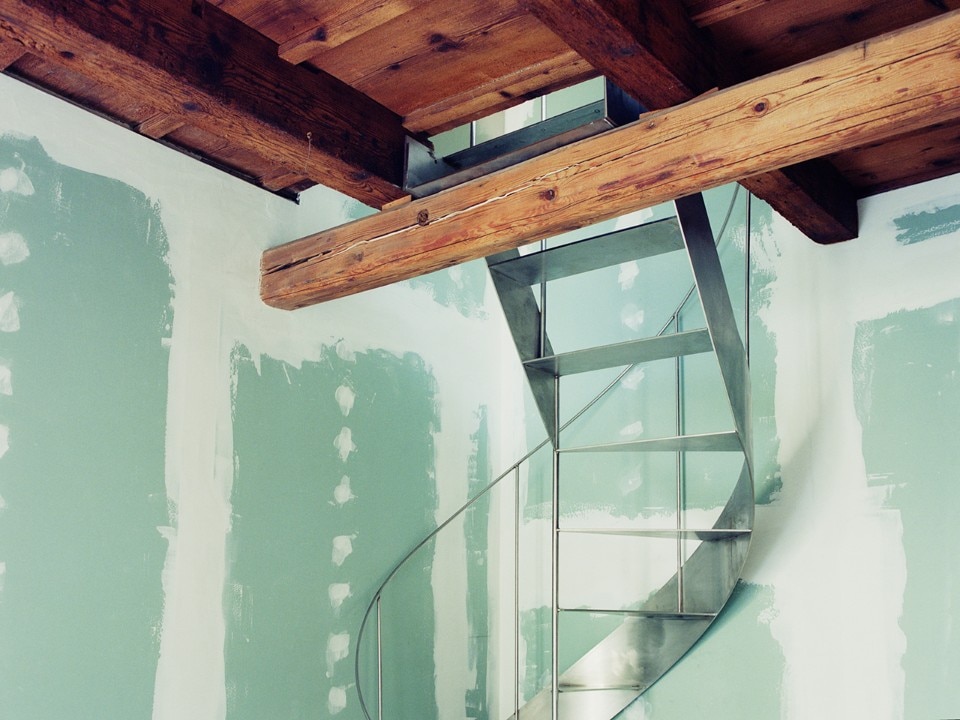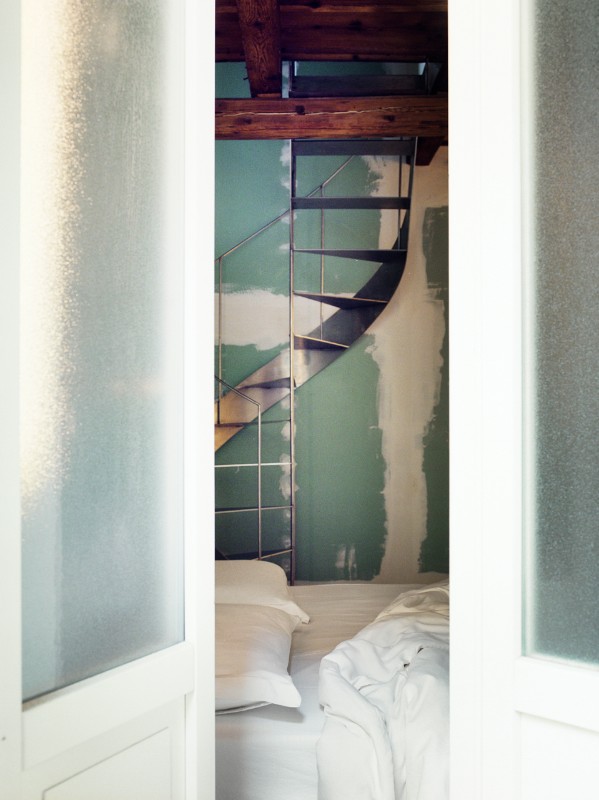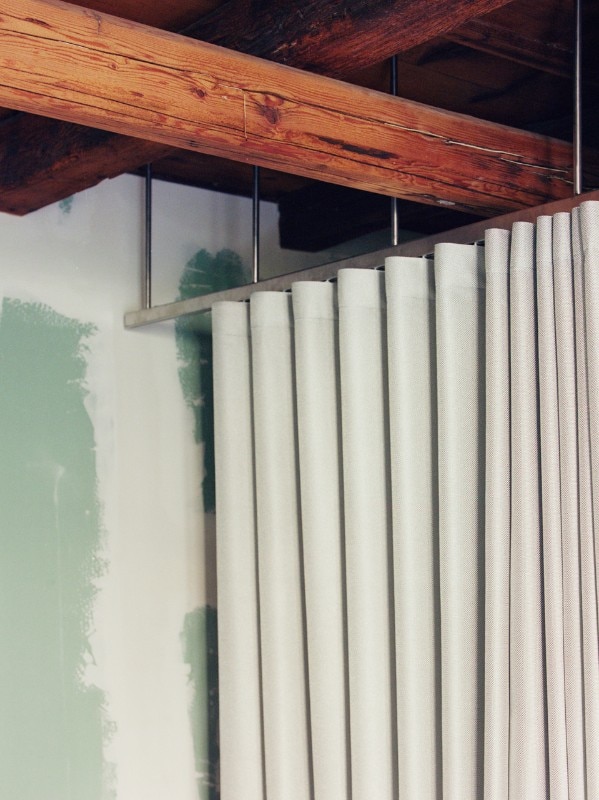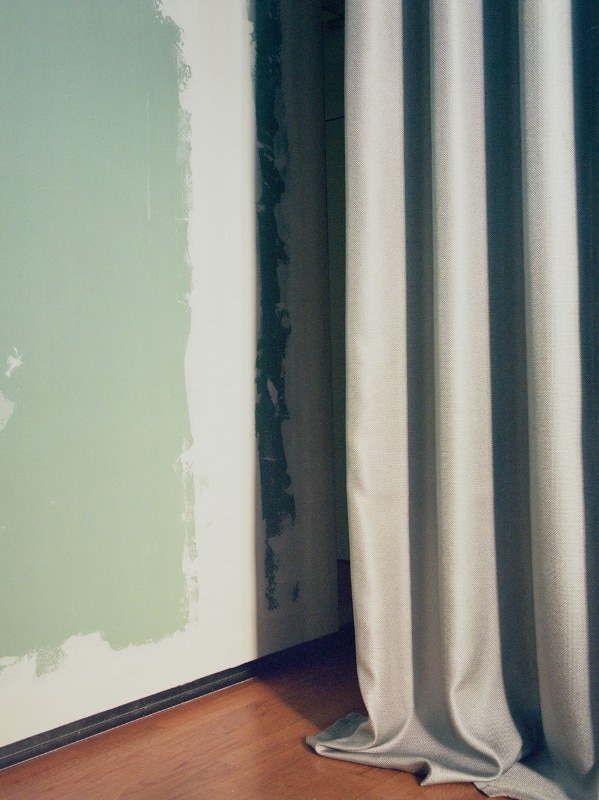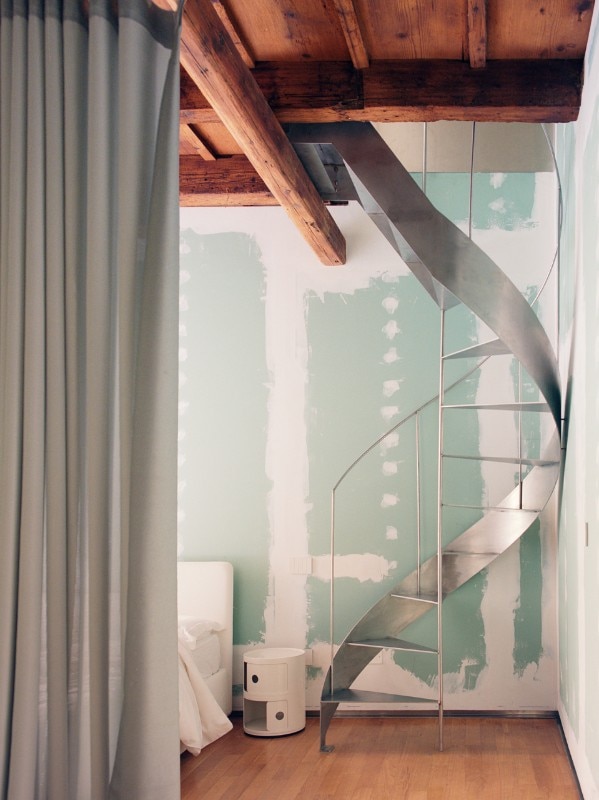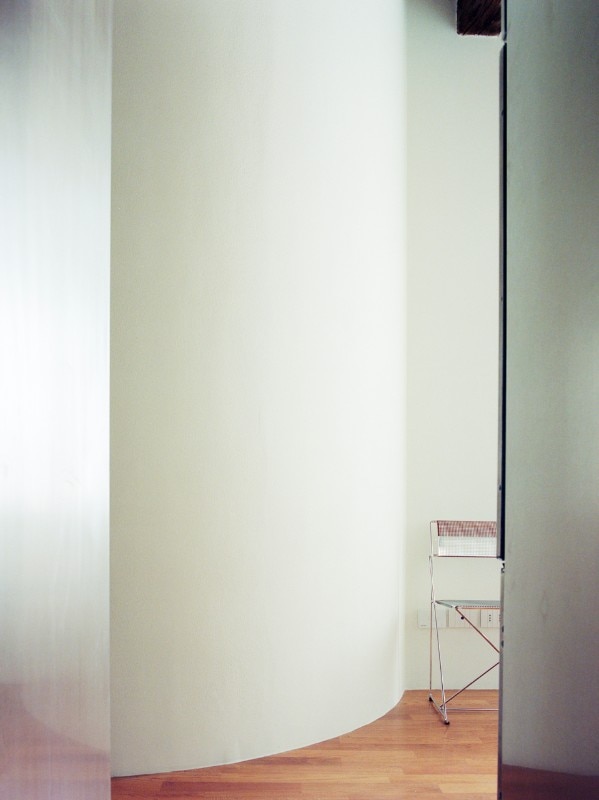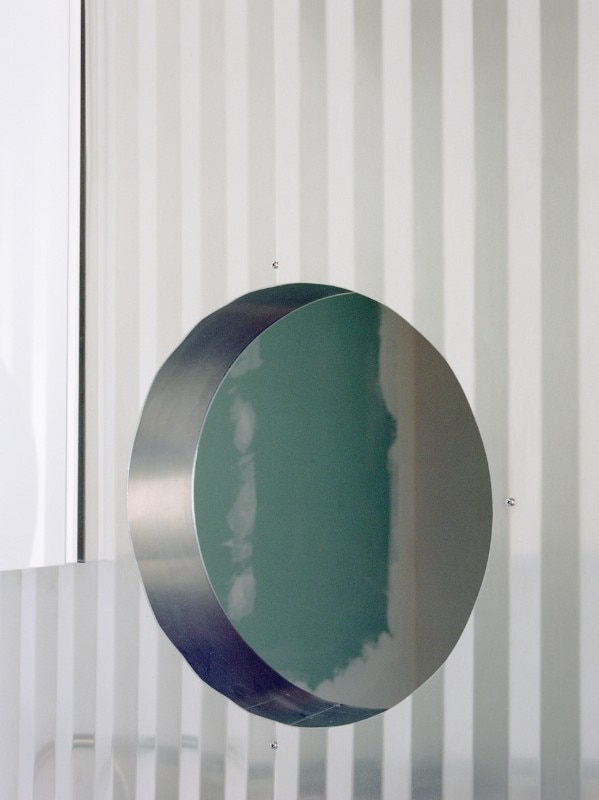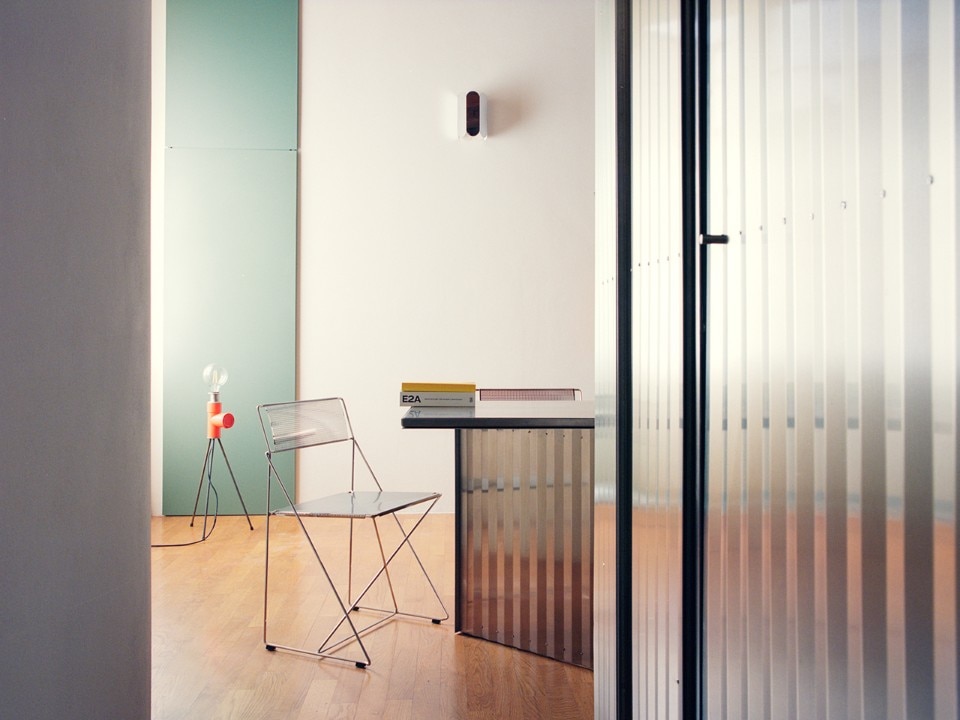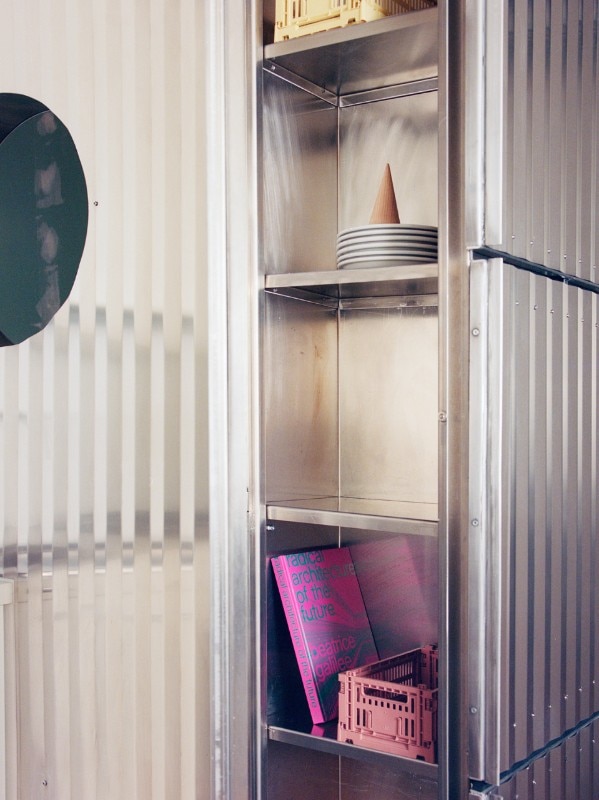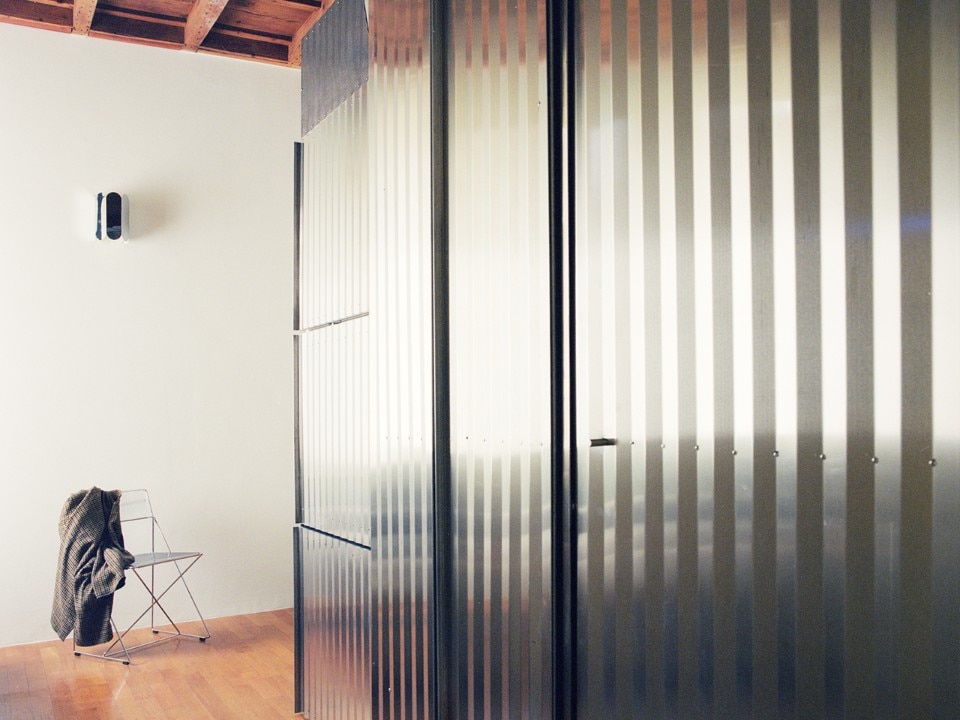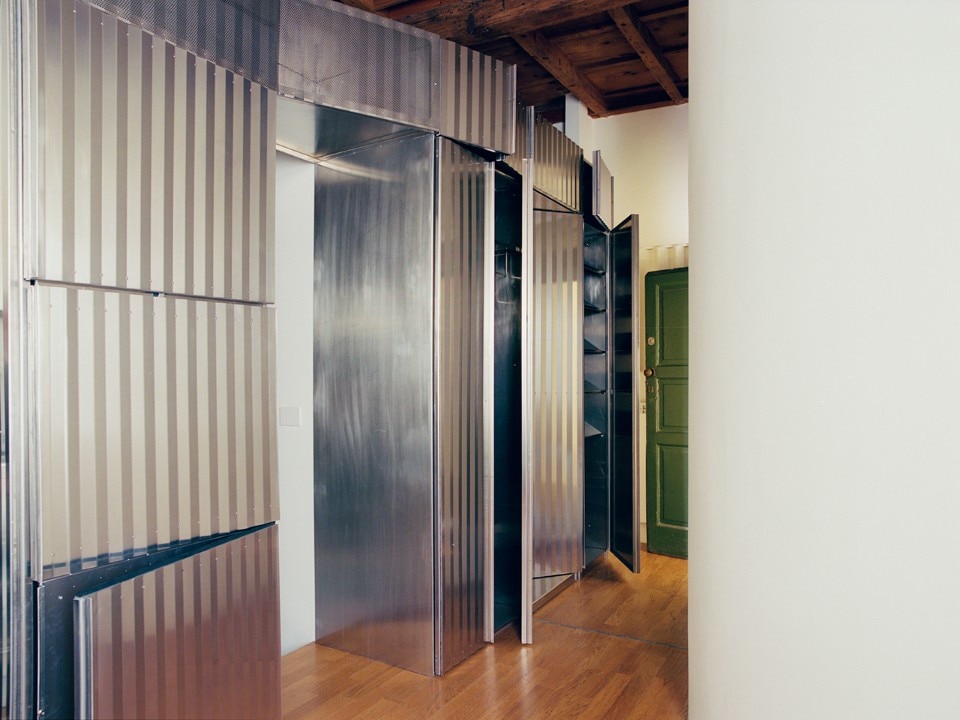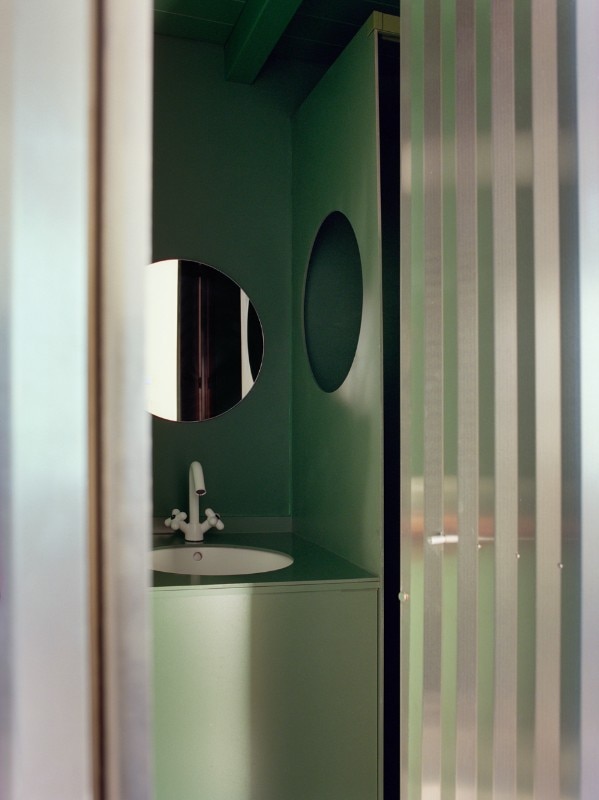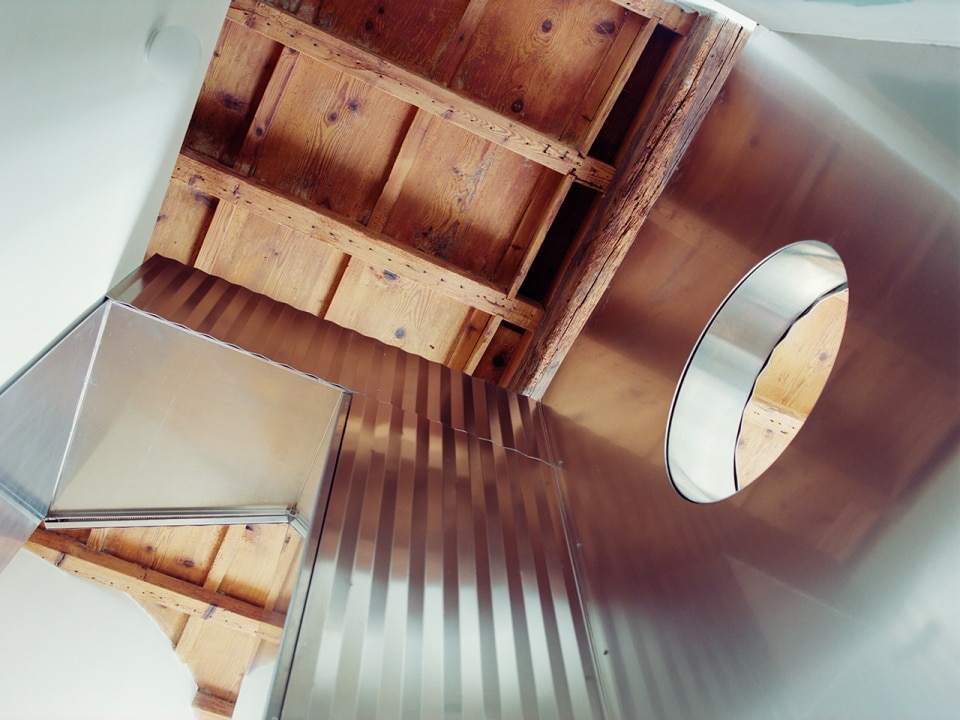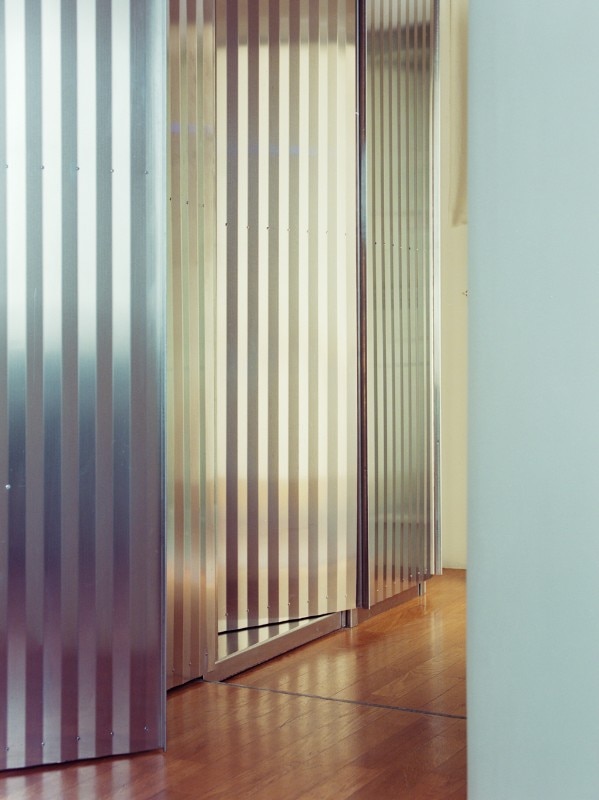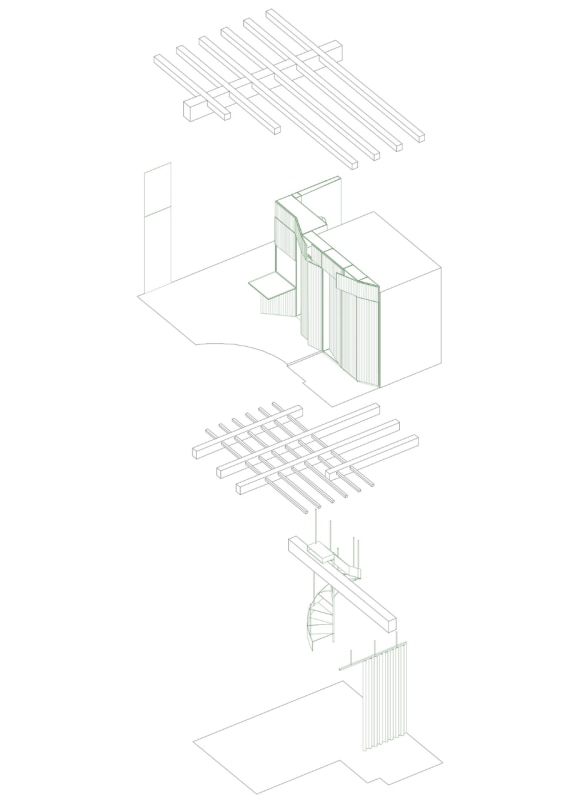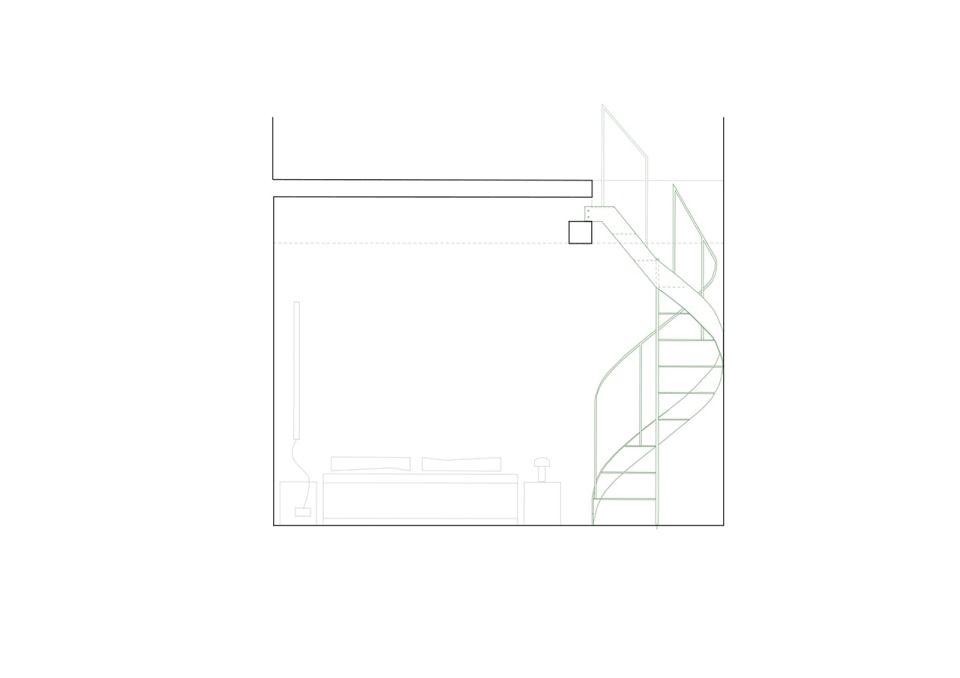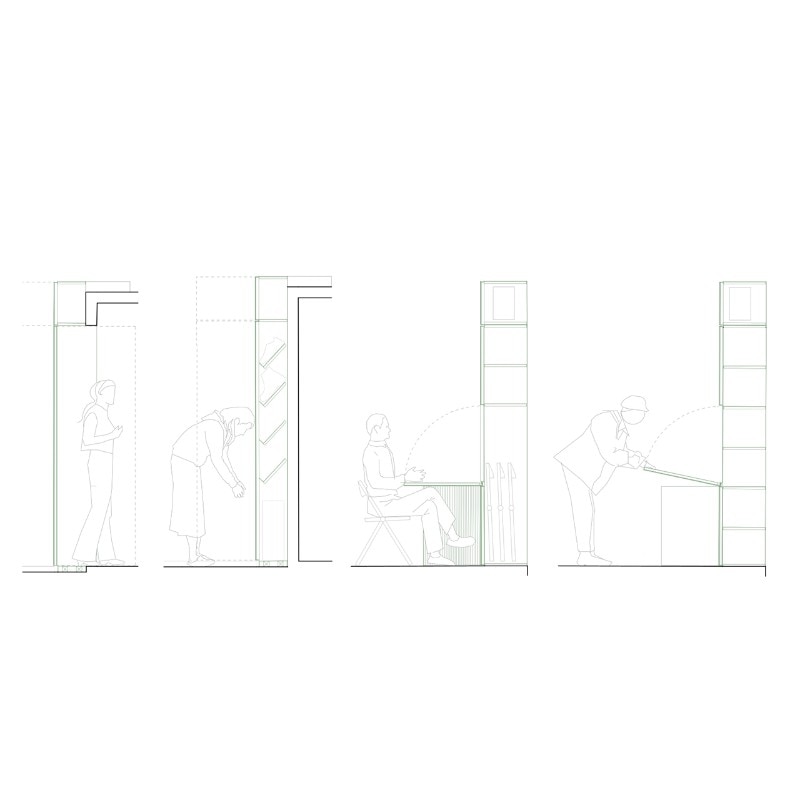In Milan, where domestic spaces seem to be shrinking more and more, Vacuum Atelier has redefined the spatial qualities of a small apartment in a historic building through a furniture-device.
This micro-architecture becomes both a piece of furniture and a wall, a domestic passepartout with angular shapes that adapts to the irregular lines of historic masonry. At the same time, it houses the necessary storage for the living area and wraps around a spiral staircase that leads to the sleeping area. The composite volume is a shoe rack, a wardrobe, a door, and even a table all in one, defined by a geometry as unstable as it is radical, which recalls the idea of the “total furnishing unit” by Joe Colombo.
The sculptural furnishing is made entirely of aluminum, which crystallizes the idea of curtain drapery through the folds of the metal, creating a continuous play of light and shadow on the compact form of the device.
The resulting aesthetic is that of a functional domestic mechanism, one that reactivates the dialogue between the old and the new, capable of reimagining the spatial dynamics of the small apartment. The constant reflections visually lighten the inserted volume, echoing the soft tones of the wood and the whole interior.
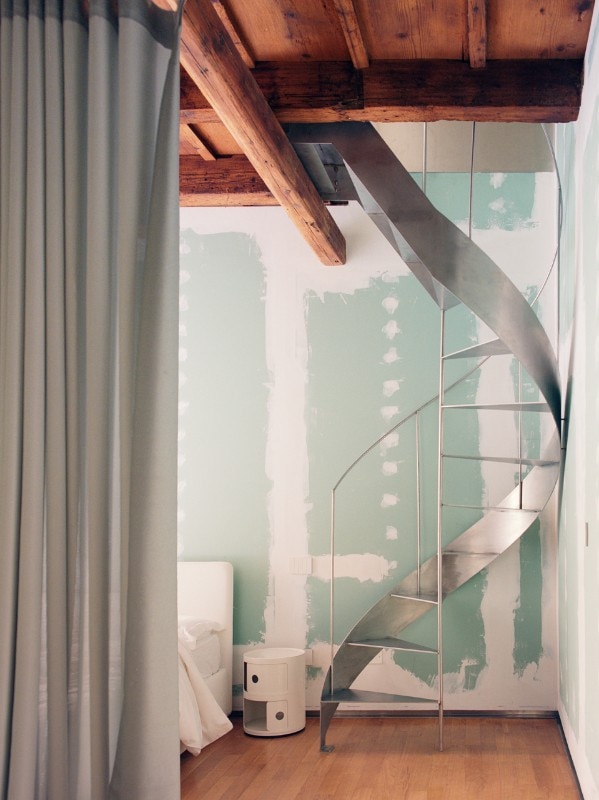
Still, if geometry and the material of this passepartout are what defines the intervention, the spiral staircase hidden within is what energizes the space. A simple, lightweight form that harmonizes with the wooden ceiling of the historic house. The staircase is composed of minimal elements: slender surfaces and a handrail that appears like a wire suspended in midair. The final step is hooked onto a beam of the ceiling, almost disappearing: a sensitive gesture toward the existing structure that transforms this staircase into a subtle meeting point between contemporaneity and historical resonance.


